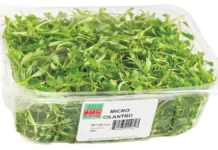
The final verdict is out! On December 1st, 2016 the new Department of Labor overtime rule will be enforced by the Federal government.
The consequences of this overtime rule will be far reaching for almost all industries, and is a topic that has been discussed exhaustively. This is the reason why 21 states have already filed a suit to prevent its enforcement. While that particular legal hassle is being sorted, businesses need to stay prepared for the possible shifts.
Restaurants across the country have a lot to think about. With the lines between managerial duties (which do not call for overtime) and non-managerial responsibilities (that are qualified for overtime) blurred, restaurant owners and executives need to conduct a full top down audit of their employees and make some tough decisions.
What Does the New Department of Labor Overtime Rule Entail?
Simply put after the 1st of December, all salaried employees who:
- Do not pass the Executive-Administrative-Professional (EAP) Duties Test and
- Earn less than $913 a week or $47,476 a year
Must be paid overtime at one and a half of their hourly rate for every hour worked beyond 40 hours.
To add to the complication, the one and a half ruling is the federal standard. In states like California, overtime calls for double the regular hourly wage.
Violation of any nature can lead to lawsuits and the payment of both shortfall and liquidated damages to the misclassified employees.
Implications for Restaurant Businesses:
According to a Zagat 2016 survey, Americans eat out 4.5 times a week and they spend more at restaurants than they do for groceries. This is great news for the industry. But with the new overtime rule, it also means millions of dollars spent in compensating employees for overtime.
- The Bureau of Labor Statistics says that there are 696,730 supervisors, managers and workers currently employed by restaurant and eateries. The average annual earning is $32,410. This is considerably lower than the threshold of $47,476 mandated by the overtime ruling. A very large number of employees in food and beverage will be impacted by this policy change. Possibly more than any other sector.
- Restaurants typically run on slim profit margins. Especially if they are small diners or popular takeout spots. These restaurants are stuck between a rock and a hard place. Increasing the salary to $47,476 may be too much of a stretch for their budget. And the one and a half overtime rate will eat into their profits in a way that is non-sustainable. In fact, the National Retail Federation believes that the restaurant industry might have to lose up to $745 million to operate by the new directive. Many owners feel that the restrictions placed on overtime will negatively impact quality of service and food station cleanliness.
- Another study by the National Retail Federation has revealed that most managers in the restaurant sector state that pitching in and keeping track of non-administrative duties is an important part of their job. This is why classification of employees as per the Duties Test will be a major challenge for restaurant owners.
- Lastly, around 81% of restaurant owners and executives have stated that the easy camaraderie between non managerial and managerial workers is essential to the success of a restaurant and that the overtime rule might restrict this interaction because of the sensitive nature of the “exempt” status.
What Can Restaurant Owners Do to Make the Best of This Situation?
For businesses hailing from other sectors, there are a number of options available and the most convenient of them is to increase the salary of employees who are eligible for overtime so that they cross the $47,476 mark.
However, the low average compensation in the restaurant sector coupled with low profit margins makes this an unfeasible solution. Moreover, the threshold will be automatically revised every three years. Hiking the salary on a regular basis doesn’t make financial sense.
Restaurant owners need to lead with a thorough revision of the classification of all employees. Any measure they decide on comes after this task is taken care of. Post classification they can:
- Convert all employees who need to put in frequent overtime to “hourly” status and instruct them to carefully log the time they spend working every week. If these employees are experienced and thus command a steeper hourly wage, activities like handling Point of Sale interactions may be automated or assigned to assistants demanding lower rates.
- Pay separate overtime to the employees who mostly do not need to work beyond 40 hours. These workers can stay salaried and request “overtime” authorization when needed. Robust time tracking will help in this scenario too.
Implementing this advice will, in fact, increase the number of workers employed by the restaurant sector, improve customer service and keep the overtime expenses in check.
Carefully Choose Your Time Tracking System:
Over the next few years, restaurateurs will discover the importance of advanced time tracking systems. A few must-have features include:
- Mobile applications that allow busy workers to log time on the go. A short order cook will not have quick access to a computer.
- A simple user interface to encourage quick adoption. Being a restaurant worker is tiring! Grappling with a complicated time tracking system will make matters worse.
- Integration with payroll software and in-system messaging to automate and streamline administrative tasks and eliminate back and forth around seeking authorization from managers.
- Meticulous documentation of hours worked and in depth reports to help identify more “proficient” workers and structure distribution of duties accordingly.
It is likely that the revised overtime rule is here to stay. Restaurants need to roll up their sleeves and get to work classifying the workforce and deploying time tracking solutions to stay ahead. All of the features mentioned in this article are available with BenefitMall’s time tracking solution. To learn more about our time & attendance software, visit employers.benefitmall.com.
Links: pos.toasttab.com/blog/ • nrn.com/government/ • nrf.com/resources/























